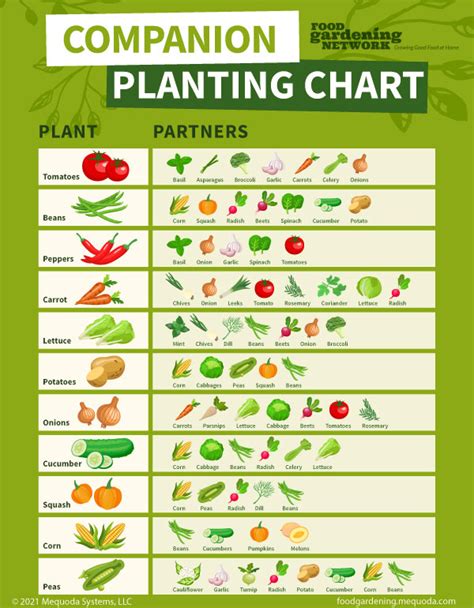Unlocking Gardening Success: The Benefits of Companion Planting on Your Balcony
In the hustle and bustle of urban life, finding harmony in nature can be a challenge. However, with companion planting in your balcony garden, you can create an oasis that not only thrives but also supports plant health and offers pest control naturally. This article delves deep into the world of balcony gardening, exploring the principles of companion planting, its historical roots, and its modern-day application in urban gardening.
Key Concepts of Companion Planting in Urban Gardening
At its core, companion planting is a method where different plants are grown together for mutual benefits. These can include pest deterrence, improved plant health, and better yields. But how can this technique be adapted for the confines of balcony gardening?
- Companion Planting: This gardening method pairs plants that benefit each other when grown in proximity. For instance, basil wards off pests that harm tomatoes.
- Urban Gardening: Adapting traditional gardening methods to urban spaces such as balconies, rooftops, and small patios.
- Container Gardening: Growing plants in pots, containers, or vertical structures, ideal for small spaces.
- Seasonal Tips: Adapting your gardening approach based on the season for optimal results.
Historical Context of Companion Planting
The practice of companion planting dates back thousands of years, with early examples from Indigenous farming techniques. Native American tribes, for example, used the “Three Sisters” technique—growing corn, beans, and squash together. The beans fixed nitrogen for the soil, the corn provided a natural pole for the beans, and the squash shaded the soil to prevent weeds. While these methods were primarily for open fields, they can easily be adapted to balcony gardening.
Current State Analysis: The Role of Companion Planting in Balcony Gardening
Today, urban gardening is on the rise due to limited space in cities and increased awareness of sustainable living. Balcony gardening, in particular, has gained traction as people seek to grow their own food or beautify small outdoor spaces. One of the most effective techniques for maximizing container gardening success is companion planting, which creates a mini-ecosystem on your balcony.
| Common Plant Pairs for Balcony Gardening | Benefits |
|---|---|
| Tomatoes and Basil | Basil repels pests and enhances tomato flavor. |
| Carrots and Chives | Chives help deter carrot flies and improve growth. |
| Radishes and Spinach | Radishes loosen the soil, helping spinach roots expand. |
| Marigolds and Peppers | Marigolds act as a trap crop for aphids, protecting peppers. |
| Strawberries and Lettuce | Lettuce provides shade for strawberries, preventing them from drying out. |
Practical Applications for Balcony Gardening Success
To successfully implement companion planting on your balcony, you’ll need to carefully plan your space and make sure your plants complement each other. Here are practical tips to follow:
- Choose the Right Containers: Ensure that your pots or containers are large enough for the root systems of both companion plants.
- Balance Sunlight Needs: Some plant pairs like shade, while others thrive in full sun. Research your plant pairings to ensure their sun exposure requirements align.
- Use Vertical Space: For small spaces, consider trellises or hanging pots to maximize your growing area.
- Monitor Soil Health: Companion planting often improves soil quality, but it’s still essential to rotate crops and use compost to maintain fertility.
Case Studies: Successful Companion Planting on Balconies
Let’s examine a few real-life examples of successful companion planting:
- Sara’s Balcony Garden in New York City: Sara combined strawberries with lettuce and nasturtiums. The lettuce shaded the strawberries from the harsh afternoon sun, and the nasturtiums attracted aphids away from the fruit.
- Mark’s Chicago Urban Oasis: Mark experimented with tomatoes and basil, alongside beans and corn in containers. The result was a fragrant, pest-resistant, and high-yielding balcony garden.
Stakeholder Analysis: Who Benefits from Companion Planting?
From urban residents looking for a sustainable food source to landlords seeking to beautify their properties, the benefits of balcony gardening are far-reaching. The key stakeholders include:
- Urban Gardeners: Enjoy fresh, organic produce grown in small spaces.
- Landlords: A well-maintained balcony garden can increase property value.
- Environmental Advocates: Companion planting supports biodiversity and reduces the need for chemical pesticides.
Implementation Guidelines for Companion Planting on Balconies
To effectively implement companion planting, follow these guidelines:
- Start Small: Begin with a few easy plant pairs like tomatoes and basil, and expand as you gain experience.
- Test Soil and Fertilizer: Ensure your container soil is well-draining and rich in nutrients. You may need to supplement with organic fertilizers.
- Maintain Consistency: Water your plants regularly and prune them to keep them healthy and well-balanced.
- Adapt to Seasons: Adjust your plant pairings according to the season and temperature to ensure year-round success.
Ethical Considerations in Urban Gardening
While companion planting offers many benefits, it is important to consider the ethical implications of urban gardening. These include:
- Pesticide Use: Companion planting naturally reduces the need for chemical pesticides, promoting a healthier environment.
- Water Conservation: Implementing water-efficient irrigation techniques in urban areas can conserve resources.
- Inclusivity: Ensuring that everyone, including people with disabilities, can participate in balcony gardening by providing accessible tools and resources.
Limitations and Future Research
While the benefits of companion planting in balcony gardening are clear, there are limitations to consider:
- Space Constraints: Not all companion plant pairs will thrive in small containers, limiting the range of plants that can be grown together.
- Microclimate Challenges: Balconies often have unique microclimates that may not be conducive to certain plant pairs.
- Long-Term Soil Health: Continuous planting of the same pairs may deplete soil nutrients. More research is needed on crop rotation practices in balcony gardening.
Future research should focus on how companion planting can be further optimized for urban environments, especially in areas with extreme weather conditions. Additionally, studies on the use of vertical gardening techniques and their integration with companion planting could provide more innovative solutions for space-constrained environments.
Expert Commentary
Experts in urban gardening emphasize that while companion planting offers a multitude of benefits, it requires careful planning and consideration of plant needs. Dr. Jane Murphy, an urban horticulturist, notes, “The magic of companion planting lies in its ability to create balance and synergy between plants. For urban gardeners, this can mean healthier plants and a more productive garden, even in limited spaces.”
However, as with any gardening technique, success comes from understanding your specific environment. John Lee, a seasoned balcony gardener, advises, “Start with small experiments and learn from your plants. Companion planting is an art as much as a science, and no two balconies are alike.”
In conclusion, with proper planning, patience, and attention to detail, companion planting can transform your balcony into a thriving, self-sustaining ecosystem that enhances your urban gardening experience.


